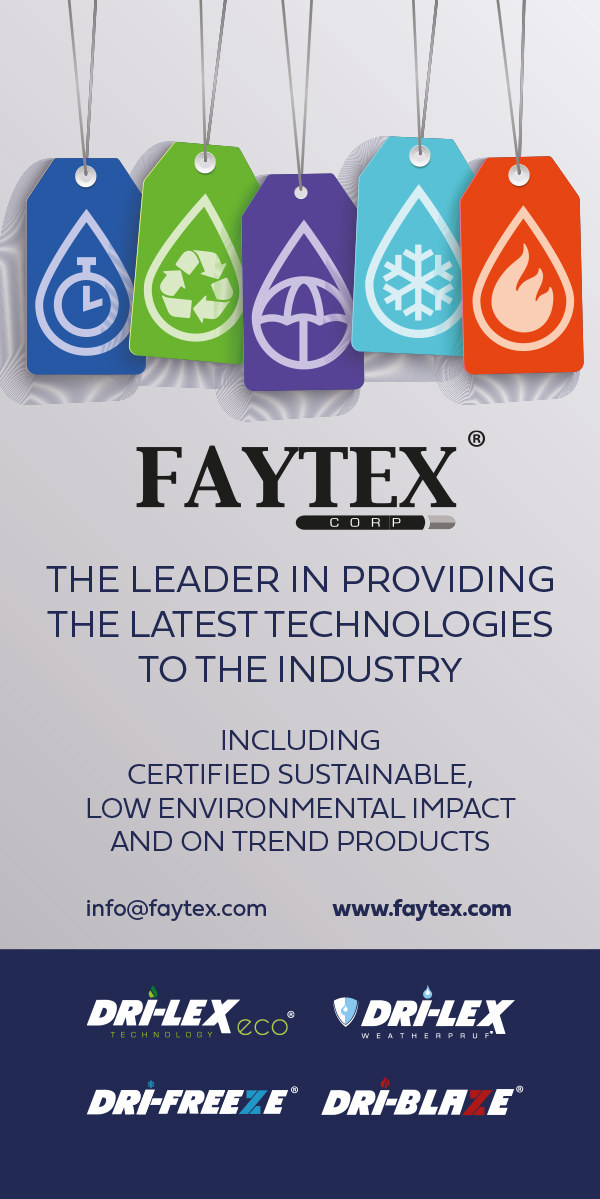Getting a grip on circularity

Huntsman has set its sights on recyclability with a versatile TPU soling range complementing a so-called first liquid TPU for the footwear industry. It suggests the combination can simplify manufacturing and presents solutions for brands’ sustainability ambitions.
A nticipating consumer trends and brands’ demands is a requisite for any supply chain company, and for advanced materials group Huntsman’s footwear sector team, helping customers to reach their circular ambitions has been the focus for its latest developments. With around 20 components in any one shoe, recycling footwear is extremely complex, with no easy or widespread solutions in place, and with incoming regulation putting the onus on sellers to take ownership of their waste and incorporate recycled or recyclable materials, brands will need to go back to the drawing board. Huntsman envisages this drawing board might feature mono-material shoes, or shoes containing fewer materials, that are simpler to break down and reconstruct, with thermoplastic polyurethane (TPU) being a versatile and multi-faceted option for various parts.
“The go-to outsole material in the footwear industry has traditionally been rubber, with its unique performance combination of durability and slip resistance,” Peter Chiang, a senior marketing manager for footwear at Huntsman, tells World Footwear. “This is particularly true in the sports segment. With the increased emphasis on recyclability, our team took the challenge to develop a TPU solution with circularity in mind that could compete with rubber. The goal was to achieve the delicate balance between slip performance, which is usually softer, and strong abrasion resistance, which tends to result in harder materials.”
At the North West Materials Show in Oregon, US, at the end of August, Huntsman launched its Avalon Gecko TPU portfolio, a series of products for soling applications. Drawing inspiration from the extraordinary grip of geckos, products offer comparable slip performance to rubber in both wet and dry conditions, the company stated. To ensure design and production versatility, Huntsman developed three grades: Avalon 6044 AG, an opaque injectable grade that is ideal for safety shoes; Avalon 6053 AG, a transparent extrusion grade optimised for running applications; and Avalon 6055 AG, a transparent injectable grade for wet slip performance.
The extrudable Avalon 6053 AG TPU enables the creation of outsoles that are up to 50% thinner and lighter than conventional outsoles, while the injectable 6044 AG grade has been developed to offer fast cycle times for improved productivity. While there are industry standards for most of the test requirements, the team had to create a procedure to mimic abrasion at elevated temperatures as part of the research and development process, Mr Chiang tells us.
“The development of Avalon Gecko TPU represents a significant advancement towards achieving circular footwear,” says Matthew Canoy, global marketing director for PU elastomers at Huntsman. “Developed to be dependable, durable and with circularity in mind, these materials ensure that sustainability and high performance are in lock step with one another, with no compromises.”
Liquid asset
The Gecko portfolio has also been designed in “lock step” with Huntsman’s previous launch, which it claims is a first for the footwear sector: a liquid thermoplastic TPU, Smartlite O LTPU, for midsoles and outsoles. This development was several years in R&D, and was introduced to the market last autumn. Creating the midsole material in a liquid form rather than the traditional foam version can simplify manufacturing techniques, it said, as expanded forms of TPU often require complex procedures such as supercritical foaming and steam chest molding. The Smartlite O LTPU system can be processed in a single step, meaning it uses less water and energy and generates less waste and fewer carbon emissions.
Huntsman worked alongside Germany-based mold manufacturer Framas Group - which has capacity to produce up to two million soling constructions per year using the material – for the launch. In situ polymerisation and fast demold rates mean cycle times for the Smartlite O LTPU system are short, said the partners. “When it comes to liquid technologies, the big challenge has always been to develop the ideal combination of liquid processing while retaining the thermoplastic and high performing properties,” explains Craig Roberts, commercial manager for global brands at Huntsman.
While the Avalon Gecko can be processed on standard machinery which is configured to run with injection grade TPU, Smartlite O LTPU requires liquid processing machinery, which provides accurate control of component and mold temperatures. The fact that they are both TPU means they can in theory be broken down by chemical and mechanical recycling and used again. Another circular advantage of combining these products is that they can bond together without the use of traditional adhesives.
Ahead of the curve
From a performance and aesthetic perspective, making products with advanced durability furthers sustainability goals in terms of keeping the shoes in use for longer. Mr Chiang believes in the future, brands will strive for even lighter products to boost wearers’ performance, particularly in the running sector. “This could be achieved either through using lesser material substances, while maintaining performance, or eliminating components, by combining some functional materials,” he suggests. “In some segments, there is a convergence of requirements while still upholding the specifications. For example, the protective shoes segment is looking more towards lightweight and comfort, while leisure footwear is adopting the sports running look and feel.”
Earlier this year, the European Parliament agreed to extend producer responsibility (EPR) schemes, through which producers that sell textiles in the European Union will have to cover the costs for collecting, sorting and recycling them separately. Member states will have to establish these schemes 18 months after the directive comes into force; they cover footwear, as well as clothing and accessories.
Soling units featuring a Smartlite O LTPU midsole and a TPU outsole can be repurposed. For example, manufacturers can mix post-industrial recycled Smartlite O LTPU content with virgin TPU to create new outsoles and cupsoles.
Huntsman has tested the use of recycled Smartlite O LTPU back into conventional injection grade TPU and confirmed that it can be used at a ratio of up to 50% to virgin TPU to produce a product with good properties. It can also make bio-based versions of the material.
“Circularity is becoming more important, not just because of regulations but also consumer interest,” Mr Roberts adds. “In the future, there will be more pressure to stop sending footwear to landfill so infrastructure and processes will need to be put in place to enable reuse and/or recycling. Recycling in-factory waste is standard practice for TPU and proof of concept is in place for Smartlite O LTPU. The challenge is to put in place collection, sorting, segregation and eventually processes to enable recycling at end of life and to be able to scale up.”
Brand feedback from the new products has been “incredibly positive”, suggesting that the advancements are catching up to the desire, offering a tool for companies as a new era of regulation, as well as increasing customer awareness, drives material change.
Huntsman has engineered its Avalon Gecko TPU with various properties, including an extrudable grade for creating very thin outsoles and a product that can be foamed to produce a low density, soft material.
All credits: Huntsman












